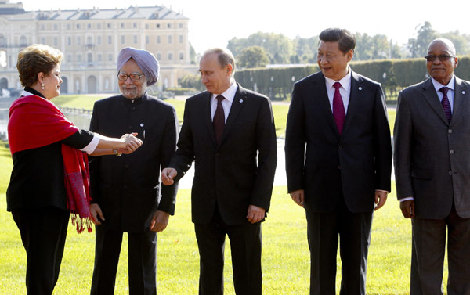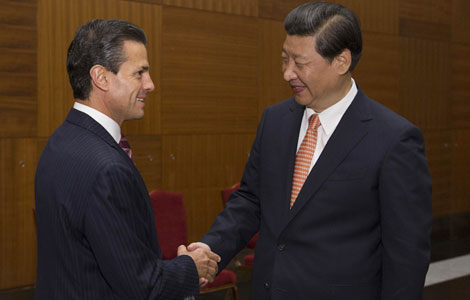Moon landing mission to use 'secret weapons'
Updated: 2013-09-04 22:39
(Xinhua)
|
||||||||
BEIJING - Multiple "secret weapons" will be used on China's Chang'e-3 lunar probe, scheduled to launch at the end of this year for a moon landing mission, a key scientist said on Wednesday.
The mission will see a Chinese orbiter soft-land on a celestial body for the first time.
In addition to several cameras, Chang'e-3 will carry a near-ultraviolet astronomical telescope to observe stars, the galaxy and the universe from the moon, said Ouyang Ziyuan, a senior advisor to China's lunar program.
The telescope will observe the universe "farther and clearer" and will possibly bring new discoveries since there will be no disturbance from the aerosphere, ionosphere and magnetosphere on the moon, offering views free from interference from human activity, pollution and the magnetic field, said Ouyang.
He said at the First Beijing International Forum on Lunar and Deep-space Exploration held on September 3-6 that the lander also carries an extreme ultraviolet camera, which will be used on the moon for the first time to monitor the transformation of the earth's plasmasphere and the planet's environmental change.
The Chang'e-3 moon rover will roam the moon's surface to patrol and explore the satellite.
Radar will be attached to the bottom of the rover to explore 100 to 200 meters beneath the moon's surface, which is unprecedented, said Ouyang.
Chang'e-3 has officially entered its launch stage, following research and manufacturing periods. It will be launched from the Xichang Satellite Launch Center in southwest China.
"The Chang'e-3 mission makes use of a plethora of innovative technologies. It is an extremely difficult mission that carries great risk," Ma Xingrui, head of China's space exploration body and chief commander of the lunar program, said last month.
The Chang'e-3 mission is the second phase of China's lunar program, which includes orbiting, landing and returning to Earth. It follows the successes of the Chang'e-2 missions, which include plotting a high-resolution, full-coverage lunar map.
Chang'e-3's carrier rocket has successfully gone through its first test, while the launch pad, control and ground application systems are ready for the mission.
China's deep-space exploration should go beyond the moon, and the country's scientists are actively preparing to implement plans to explore Mars, Venus and asteroids, said Ye Peijian, chief scientist of the Chang'e-3 program.
"Scientists are always prepared to conduct deep-space exploration and will do it after conditions permit," said Ye.
Ouyang said the scientific goals of solar system exploration include searching for extraterrestrial life; deepening understanding of Earth by exploring Mars, Venus and Jupiter; investigating the impact on Earth caused by solar activity and asteroid strikes; searching for new energies and resources; and preparing for mankind's future development.

 China, Russia a step closer on gas supply
China, Russia a step closer on gas supply
 18-year-old panda conceives triplets
18-year-old panda conceives triplets
 Testing times for G20 leaders
Testing times for G20 leaders Homemade choppers make aerobatic stunt debut
Homemade choppers make aerobatic stunt debut
 World-class partners bring NBA global games to Chinese fans
World-class partners bring NBA global games to Chinese fans
 Shanghai's visa-free policy lifts tourism
Shanghai's visa-free policy lifts tourism
 Panda twin cub born at Atlanta Zoo
Panda twin cub born at Atlanta Zoo
 Xi, Mexican president meet for third time
Xi, Mexican president meet for third time
Most Viewed
Editor's Picks

|

|

|

|

|

|
Today's Top News
China, Russia a step closer on gas supply
Japan to test wall for leaking water
Low-budget education abroad for working-class
Shanghai's visa-free policy lifts tourism
Brazil asks for apology from US on spying
Xi calls for closer G20 ties
US service providers eye China
Trending news across China
US Weekly

|

|





